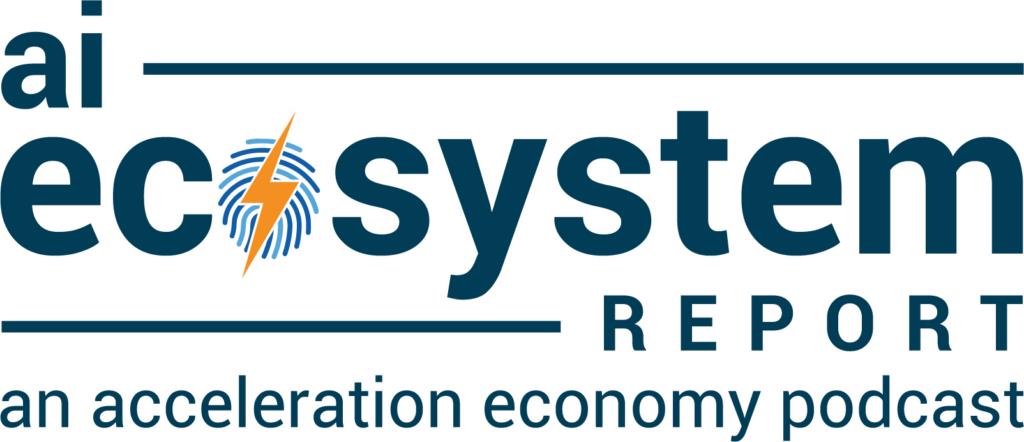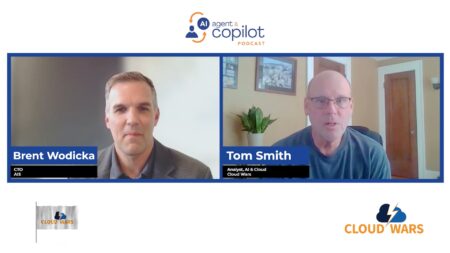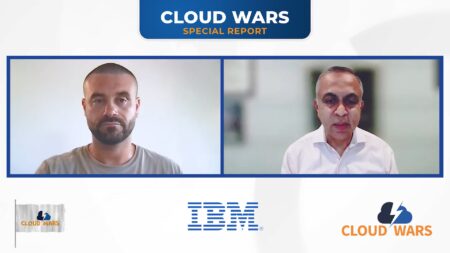I was on location at Automation Anywhere Imagine in Austin, Texas, on Tuesday. In this video, I speak with Neeti Mehta Shukla, chief social impact officer and co-founder of Automation Anywhere. We discuss how Automation Anywhere’s social impact office leverages technology, including generative artificial intelligence (generative AI), to transform nonprofits and bridge gaps in societal equality.
Automation Anywhere is on the Acceleration Economy Top 10 Shortlist of AI/Hyperautomation Enablers.
Highlights
00:51 — At Automation Anywhere, there’s a give-back culture. As its technology and platform grew, it saw how customers benefit: increased productivity, increased ROI, reduced costs, having a more satisfied workforce, and a workforce using its skillset for value-added work. It asked, in which vertical would this be most useful?
01:45 —The answer was the nonprofit vertical. It needed to work with the nonprofit sector in order to help all of society do better. It isn’t about making a profit but about being a partner to enable nonprofits to use its technologies to do more good.
03:16 — Automation Anywhere is a catalyst technology. The integration between generative AI and intelligent automation (IA) means jobs are going to be impacted. It’s an opportunity to help reskill and upskill folks and make tech jobs more accessible. That’s why the impact office was set up.
05:01 — Many nonprofits have good IT departments or technology departments, but the day-to-day is so critical that things that take a longer period of time can be postponed. And so the impact office’s aim is to help them get there faster so that they can reap the benefits faster.
05:42 —In general, a lot of technology companies are good citizens. Having said that, a lot of tech companies do a lot of things rather than having a little bit more focus. They feel the passion for it at Automation Anywhere.
07:05 — I think purpose and business can go hand in hand at all times, and it lifts everything up. It lifts the business up, it lifts the purpose up.
07:41 — Automation Anywhere found a process to automate for an organization in Ukraine that provides aid like medicine and diapers. The automation enabled the organization to be able to parse through 400% more aid requests each day; set up 12 new centers due to the volunteers having more time to take on more areas; and fulfill 100,000 aid requests, touching 32,000 people in the process.

Which companies are the most important vendors in AI and hyperautomation? Check out the Acceleration Economy AI/Hyperautomation Top 10 Shortlist.
09:01 — Now it’s integrated IA and generative AI. So if an IDP (internally displaced person) or a refugee were to send a telegram or WhatsApp message to say, “I’m requesting this XYZ,” bots and generative AI can be used to parse that message, digitize it, and decide whether it’s an information request or a service request and respond appropriately.
10:38 — Automation Anywhere works with many social organizations around the world to bring reskilling to society’s marginalized segments. The only employment in Clarksdale, Mississippi, is farming or McDonald’s. It set up an RPA Center of Excellence with a partner and was able to train between 100-200 folks who, within about three to six months, were able to move to 100,000 $120,000-paying jobs.
11:42 — It does similar work in Africa to help train women to get tech jobs and has recently worked with an organization in Japan that trains refugees. Through another organization, it trained a Syrian refugee who now lives in Turkey. He learned IA and now has a job. He’s also a trainer for other refugees, paying it forward.
12:40— The ecosystem of what is possible, has changed. The fact that we can train somebody in three to six months is a game changer in this instance. Neeti believes she has the best job in the world.
14:09 — Artificial intelligence will bring on products, services, and possibilities that have not even been considered today. From an impact perspective, it’s a moment in time that if we train these bots with the right, diverse, and very broad datasets, we can actually bridge that anti-bias gap that we’ve created unconsciously, as a community or as a society. So it’s really about being conscious and focused on creating those datasets.
15:20 — The more digital inclusion of different types of people, different folks, different economic structures, different regions of the world, and different minorities, the more diverse that dataset and the more equal products will be.
15:49 — Generative AI helps us amplify what is possible. Nonprofits can do more with the grant money — serve more people, increase error reduction, have better compliance, and have more governance versus all the administrative and repetitive work they normally have.
16:37 — AI and generative AI have unleashed yet another evolution of technology and what it can bring in products and services to all verticals, whether you’re a finance organization, an energy organization, a grocery store, or a nonprofit.











